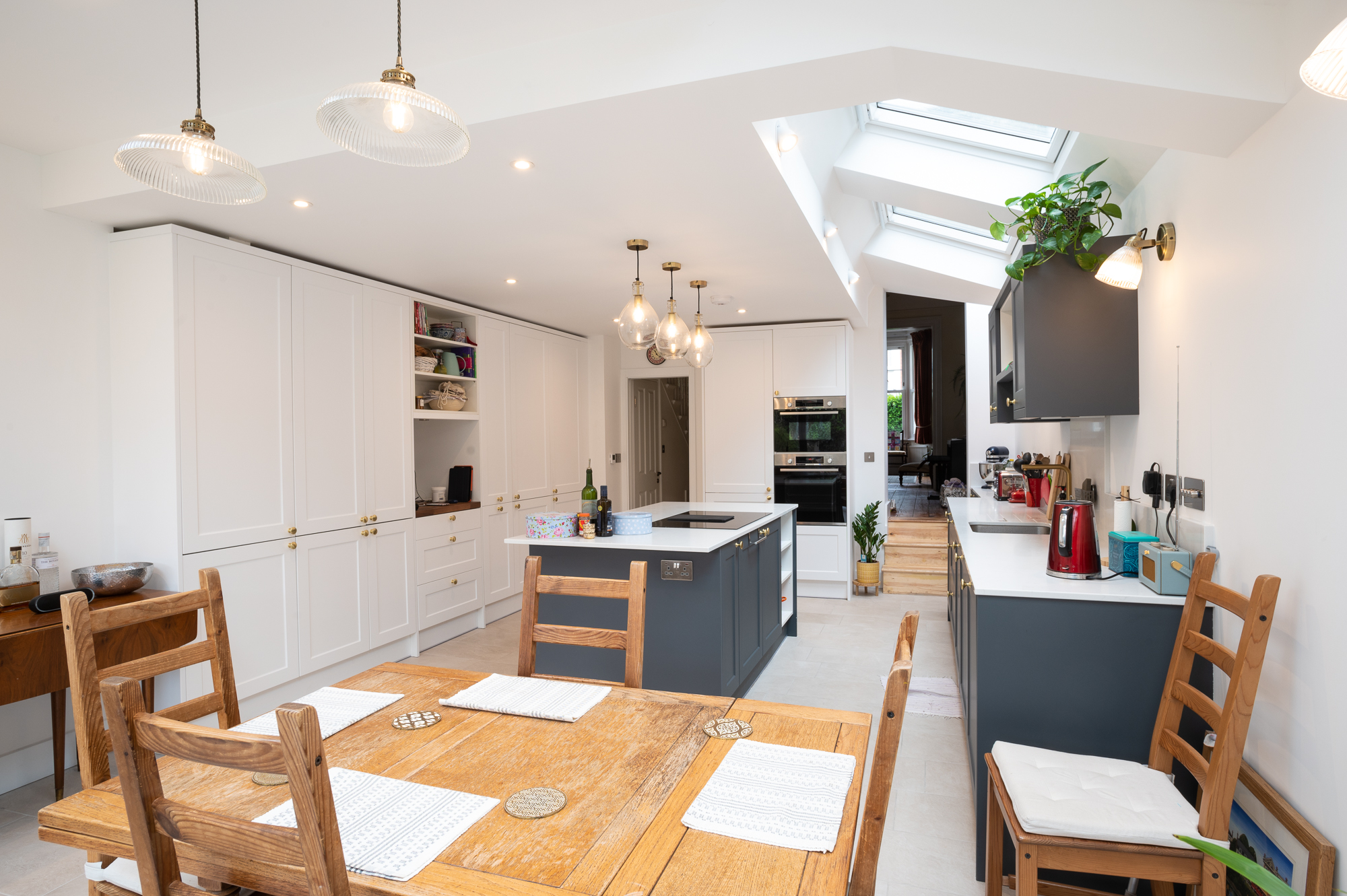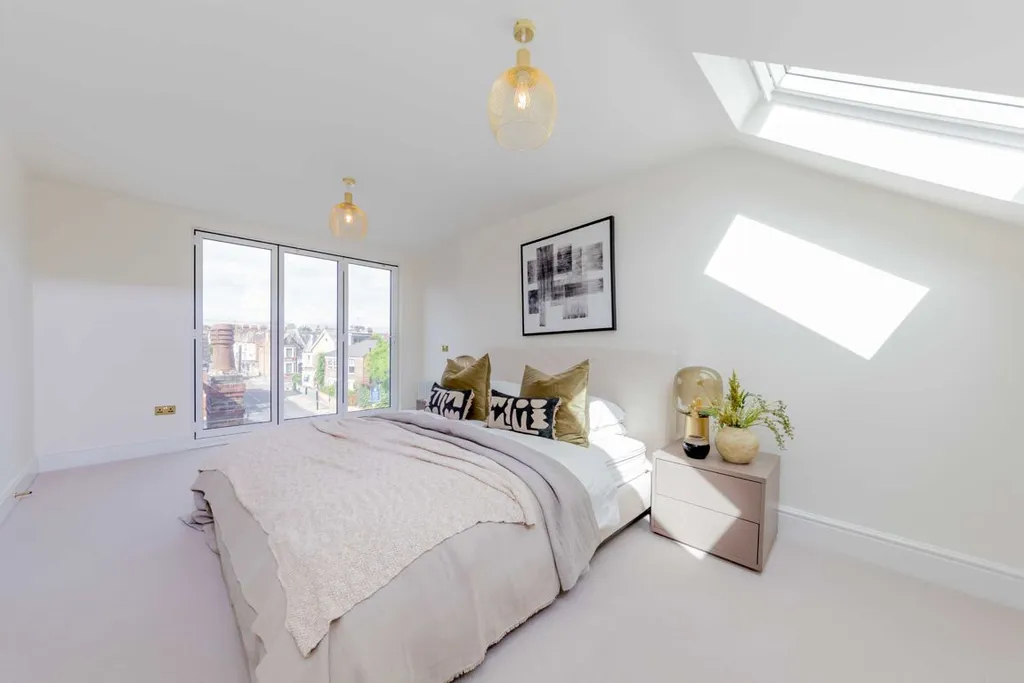Moving is getting costlier, but you are outgrowing your Victorian home. What should you do? Let’s all thank extensions. With the average house price in London at £500,000+, not many are betting on upsizing. Yet, it doesn’t have to stop you from freeing up space in your home to make more room for the family or entertaining. Let’s talk extensions but double-storey ones.
What is a double-storey extension?
A double-storey extension adds another floor to your extension. You can build an additional storey onto a Side, Rear, or Wraparound extension. An existing single-storey extension or garage may be used to add an extra floor, or you can create two storeys for a new extension. It’s like doubling space out of thin air. Building upwards is the only way to create space when your garden space is limited or when you are trying to save every green inch you can.

Adds value to your home
Double-storey extensions can add 20% to the house value. A Nationwide study shows that an extra bedroom adds 10% to the value, while a bedroom with a bathroom can add 20%.
Buyers are more interested in homes that already have extensions as it saves them from periods of building work or applying for planning permission. An extra bathroom and a bedroom improve the square footage of your home. More people are looking for additional bathrooms and WCs as personal freedom ranks higher in the choice of a property. Freestanding baths and walk-in showers are becoming favourite house features among Brits.

Double the space
You might be willing to extend your home for a Side Return, but not a Rear Extension, as you want to preserve your garden for your green fingers. With a double-storey Side Return, you can double the space without compromising the outdoors.
You might be willing to extend your home for a Side Return, but not a Rear Extension, to preserve your garden for your green fingers. With a double-storey Side Return, you can double the space without compromising too much of the outdoors. Home remodellers call the side garden alleyway dead space. Only an extension can maximise its use. You can also double the space with a two-storey Rear extension. It offers more flexibility and space as it faces your back garden.
The optimal extension is adding a double-storey Wraparound. A Wraparound extension combines both a Side Return and a Rear Extension. It extends both ways, adding more length and width to the house.
Building over your existing garage allows you to use your garage to park your car, as a tool shed, or as storage while opening up a new space for a bedroom or home office upstairs. If you have a disused garage, you can convert the ground floor, creating a small self-contained flat. While half the UK population owns a home garage (53%), only less than a quarter uses it for parking vehicles (9%).

Versatility
Two floors offer twice the options. You can finally have a bedroom and a bathroom or two bedrooms. There will be space for a gym, playroom, new dining area, yoga studio, music room, home office, or even a roof terrace. You can create a roof garden to compensate for the lost garden space. The ground floor area can work as a kitchen extension and the upstairs can transform into a bedroom or bathroom. Depending on the size of your home and your requirement, you can choose from an endless combination of spaces.

What you need to consider when building a double-storey extension
Most two-storey extensions do not fall under permitted development rights. Building a double-storey Side Return always requires householder planning permission. However, other double-storey extensions may not need planning permission as long as;
- It does not extend beyond the rear wall of the original house by more than 3m or be within 7m of any boundary opposite the rear wall of the house.
- The roof pitch matches the existing house as far as practicable.
- Any upper-floor window in a ‘side elevation’ must be obscure-glazed; and non-opening unless the openable part is more than 1.7m above the floor.
- All double-storey Rear Extensions of homes situated on designated land need planning permission.
- Extensions cannot be higher than the highest part of the existing roof; or higher at the eaves than the existing eaves.
- Where the extension comes within 2m of the boundary, the height at the eaves cannot exceed 3m.
- The extension may not be forward of the principal elevation or, where it fronts a highway, the side elevation.
- The double-storey extension cannot include any balconies, verandas, raised platforms, microwave antenna, chimneys or cause alteration to the existing house’s roof.
- Houses on a conservation area cannot have exterior cladding.
- The exterior must have material and finish similar to the exterior of the existing house.

Hire the right people!
A double-storey extension always proves to be a worthy investment. However, several factors and components must come together to make it your dream space. You need to hire a team that supports your project from conception to completion. Before you build an extension, it needs a vision. Innovative ideas create beautiful, functional spaces.
Make sure you have professional architects on the team to help you design space-maximising, light-filled, ventilated, modern spaces that reflect your needs. Look for period home remodelling experts who are familiar with the architecture and specifications of those homes. You will also want assistance with third-party wall agreements and coordinating with local authorities. Make sure your team has a structural engineer to oversee building control.
Choose those who submit planning applications, building control applications, and prepare method statements on your behalf. A team well-versed in planning permission guidelines will ensure your plans are lawful and you don’t have to get bogged down in detail.

Conclusion
Most homeowners overlook double-storey extensions as they sound ambitious. However, building atop a single-storey extension is much easier. Does a beloved home suffer from a lack of space? Call us today! Good Design and Build brings unique designs that transform Victorian and 1930s properties. 100% bespoke and two contracts for two phases, explore your home’s potential to grow in space and value.




